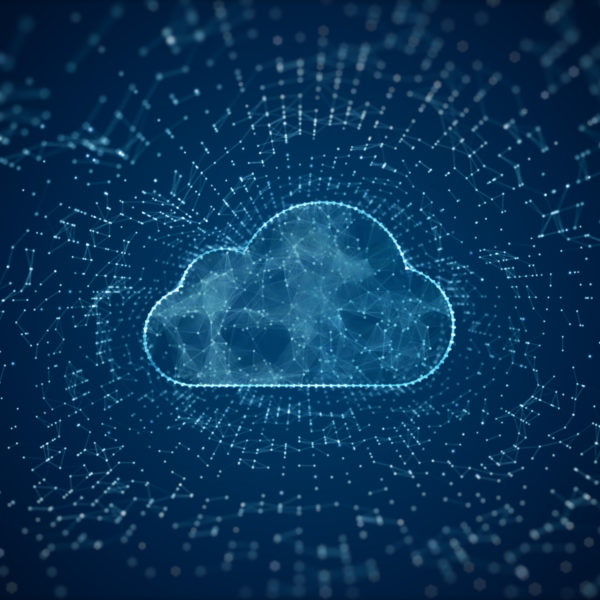
For the previous few years, software development has been moving to the cloud. Databases are no exception. A cloud database is a type of scalable content database that runs on a cloud computing infrastructure and may be either private, public, or hybrid.
There are two cloud database environment types: the traditional cloud model (the content database is maintained on the company’s infrastructure, which means that any management comes straight from the IT team) and Database-as-a-Service (DBaaS) (the cloud provider is in charge of everything in the system while the user can devote all their attention to operations, development, and corporate objectives).
Why are cloud databases gaining popularity?
The wide range of inherited benefits that moving to the cloud can offer today is one of its major advantages. So, what are the advantages of moving to the cloud?
- Advanced security. If you’re using in-house servers to host your databases, it’s your responsibility to consider security. This is something that can be accomplished, but most businesses either don’t do it at all or do it poorly. You’ll get inner peace if you outsource database management to a cloud provider.
- Improved scalability. Businesses with a large number of customers may benefit greatly from the use of a database-as-a-service (DBaaS). During peak hours or ahead of major releases with tight deadlines, scalability can be achieved effortlessly and gracefully. This is a significant advantage for expanding businesses that do not have the financial or technical capacity to manage on-premise infrastructure.
- Newest technology. Companies no longer have to spend money on new equipment, since the cloud vendor is solely responsible for modern infrastructure. Companies don’t need to hire additional personnel just for training and onboarding.
- Simple implementation. The cloud database allows a company to keep its existing business processes and apps without dealing with technicalities on the backend. Cloud DB can be controlled remotely via the internet, allowing any organization to access the cloud infrastructure quickly.
- Less hardware. Companies may now spend less on hardware and resources, as well as IT expenditures since the cloud service provider takes care of maintenance and infrastructure. There are also fewer obstacles and disputes that commonly slow the development down.
- Cost-effectiveness. The cloud database minimizes overhead expenses. It allows the company to utilize more resources and time to develop its infrastructure.
Top 5 cloud databases to use in 2022
1. Amazon DynamoDB
Amazon DynamoDB is a proprietary NoSQL database service provided by Amazon.com as part of the Amazon Web Services portfolio that supports key-value and document data structures.
Amazon DynamoDB features:
- It’s a document-based NoSQL database with a key-value pair structure.
- It’s created for web-scale apps. It can process more than 10 trillion requests each day and handle peak rates of up to 20 million per second.
- DynamoDB has a single-digit millisecond response time at any scale thanks to its multi-region replications.
- It’s a multi-master, fully managed, multi-region, very convenient database that you can use right away.
2. Azure SQL Database
Microsoft Azure SQL Database is a fully managed platform as a service (PaaS) database engine that takes care of almost all management tasks such as backups, upgrading, monitoring, and patching without demanding user presence.
Azure SQL features:
- Cloud-based Managed SQL database on the Azure cloud.
- It includes a serverless compute tier.
- This database includes various Elastic pools to maintain and scale many databases with varying workloads efficiently and cost-effectively.
- It’s a 99.99 percent reliable SQL database with near-instantaneous backups and fast data recovery in the event of infrastructure failure, as well as an enterprise-ready cloud service that can be accessed via any browser or mobile device.
3. Google BigQuery
Fast and flexible, BigQuery is a cost-effective data warehouse that is tightly linked with the rest of the Google Cloud Platform. It uses a serverless architecture and has use-based pricing.
Google BigQuery features:
- The architecture is Serverless with automated high availability and distributed storage as well as managed provisioning, support, scalability, and security.
- Solid real-time analytics support by rapid streaming insertion API.
- Users may use standard SQL queries to make and implement machine learning models in this data warehouse with the help of BigQuery ML.
- The BI Engine’s sub-second query latency and high concurrency for common BI tools are achieved via classic ODBC/JDBC.
4. Amazon Redshift
Amazon Redshift is a fully-managed data warehouse solution that is part of the Amazon Web Services cloud-computing platform. Redshift differs from Amazon RDS, the company’s other hosted database service, in that it can process analytical queries on large data sets stored by a column-oriented DBMS.
Amazon Redshift features:
- Cloud-ready and petabyte-scale solution.
- The Amazon Redshift data warehouse has built-in integration with AWS cloud and data services along with the AWS Analytics ecosystem.
- Swift querying for analytics, effective storage, cache, and synchronous analysis, thanks to MPP.
- Amazon Redshift’s query cache AQUA can provide ten times greater query performance.
5. Azure Cosmos DB
Cosmos DB is Microsoft’s globally distributed database service that allows present-day app development. It’s horizontally scalable, schema-agnostic, and commonly referred to as a NoSQL database.
Azure Cosmos DB features:
- With a single-digit millisecond response time, this database allows you to access and modify data from the database’s local replicas.
- Document database for semi-structured data, wide-column storage for high-performance big data, and a graph database for vastly relational data are supported data models by Azure Cosmos DB.
- Cutting-edge consistency levels with an assured service-level agreement (SLA).
- It suggests many popular APIs and access patterns (Cassandra API, SQL, MongoDB API, Gremlin).
Concluding thoughts
Of course, there are other cloud databases out there that you can use in your projects. Each project has its own peculiarities and some databases might not be suitable for all developers out there. Our team has worked with the databases above and we are more than certain of their reliability.
Read also: A case study about Cloud-based solution for improving health services.
Whether you need to start a new project or expand your existing application, the list above can help you find an efficient database for your needs. Our team is ready to assist you in this task as well. We have extensive experience in building software solutions using cloud databases for data storage. Drop us a message if you have a task for us!



![How Much Does It Cost to Build AI Solutions In 2025 [Ultimate Guide]](https://crunch.is/wp-content/uploads/2024/06/steve-johnson-1FD-E7Ioblw-unsplash-scaled.jpg)



